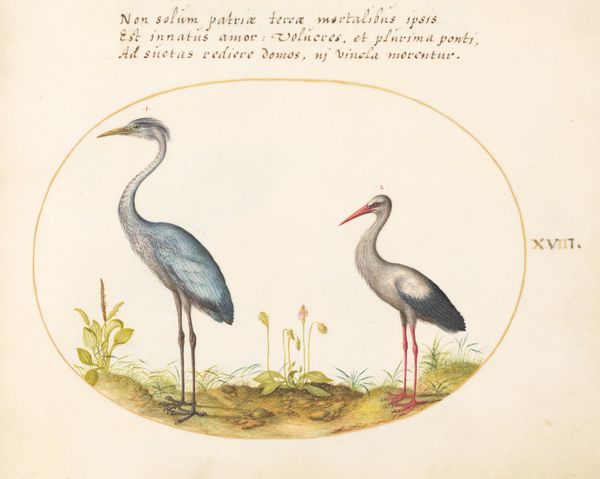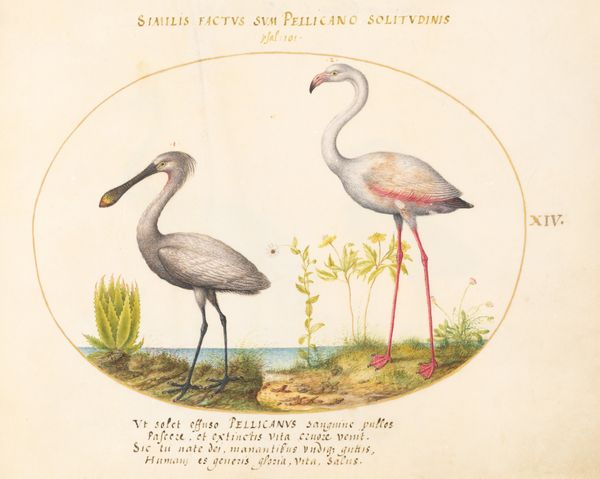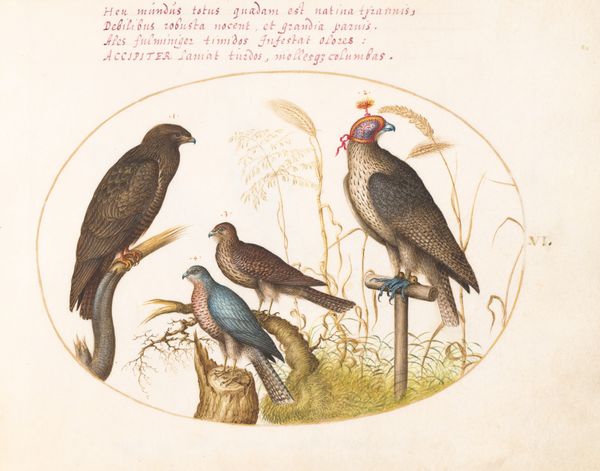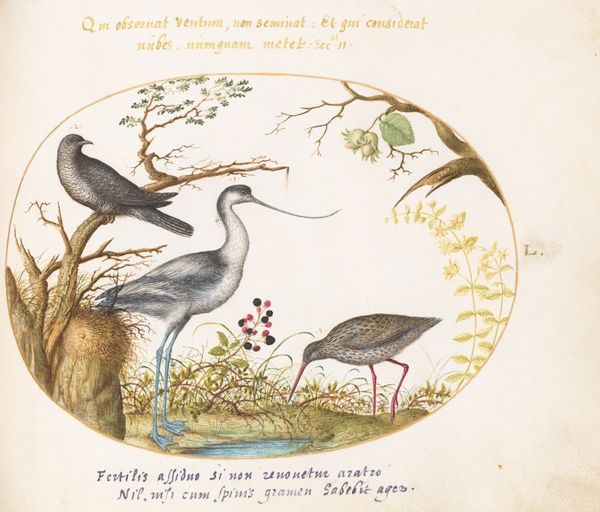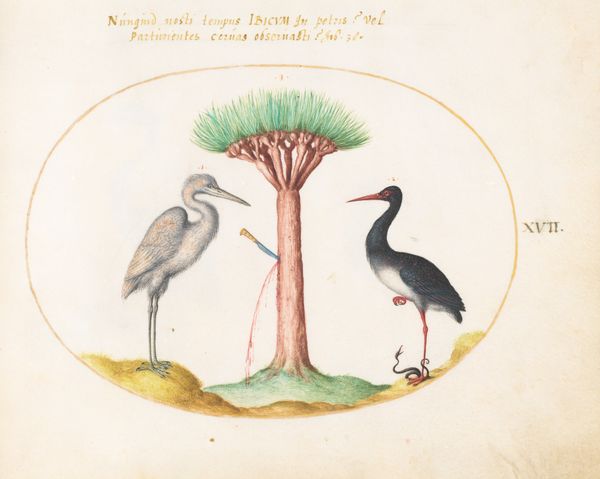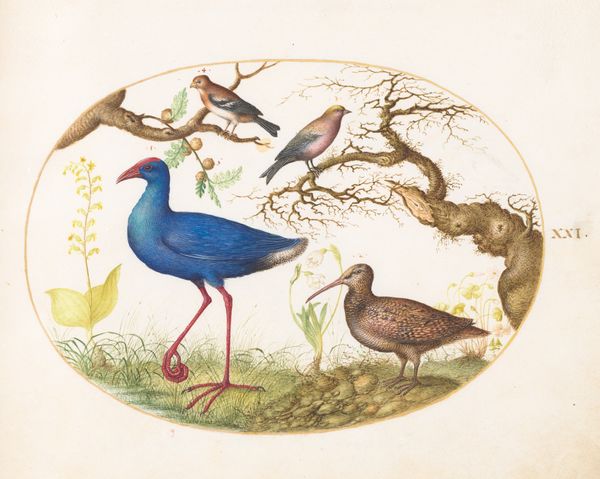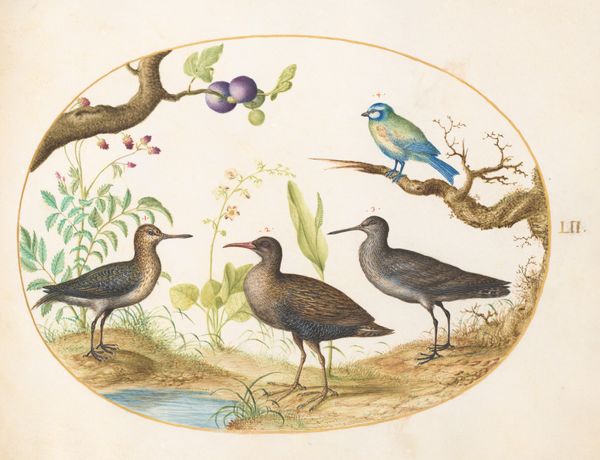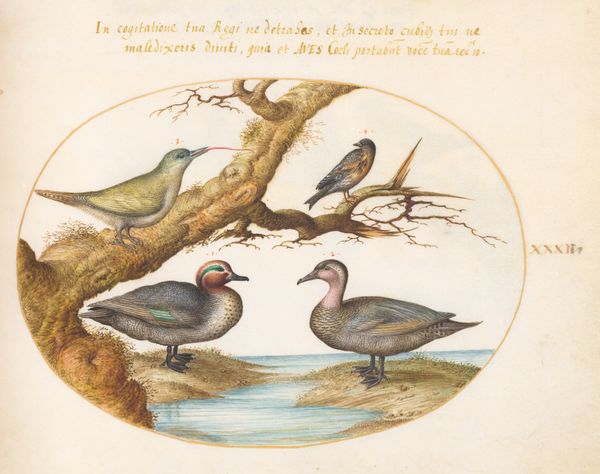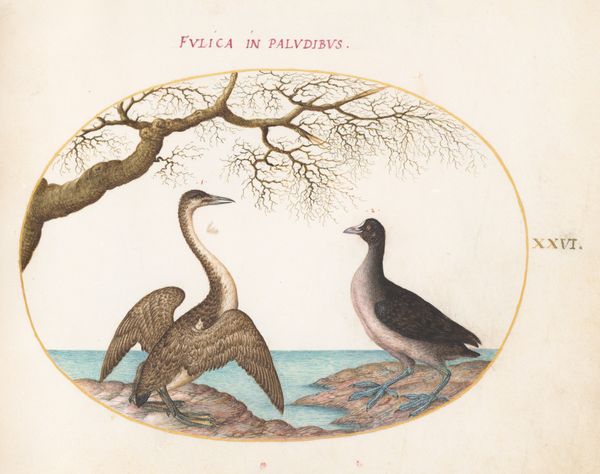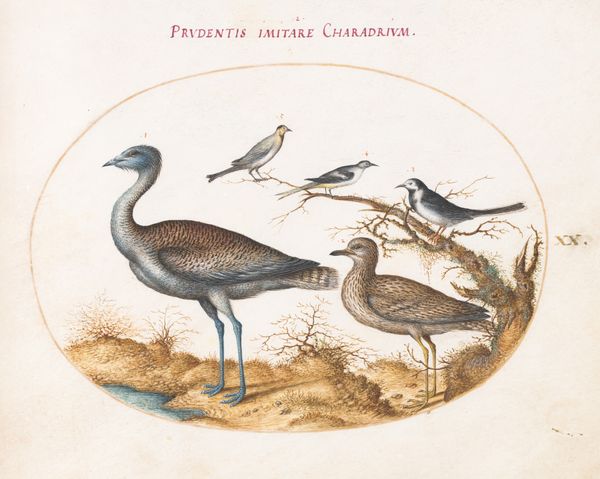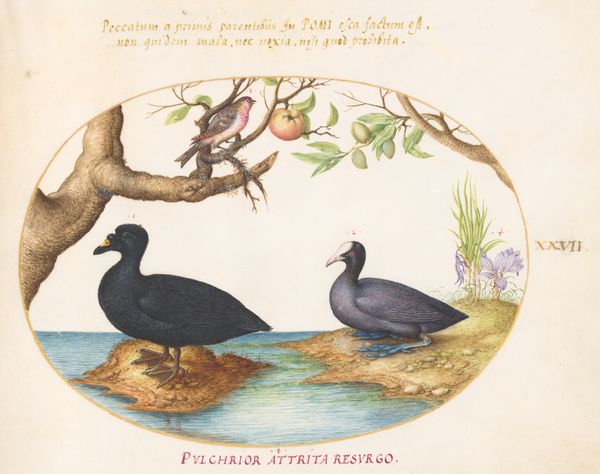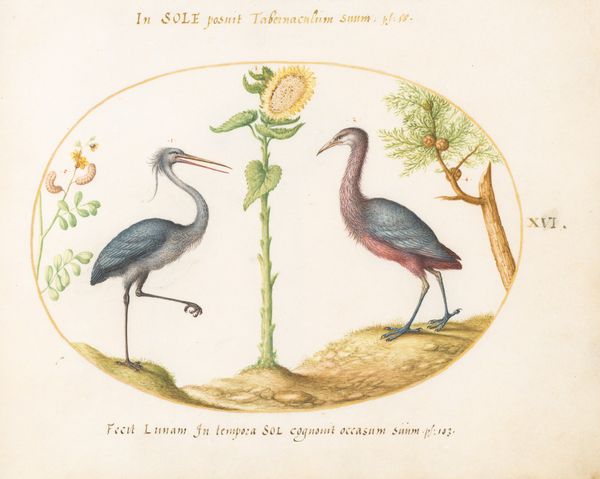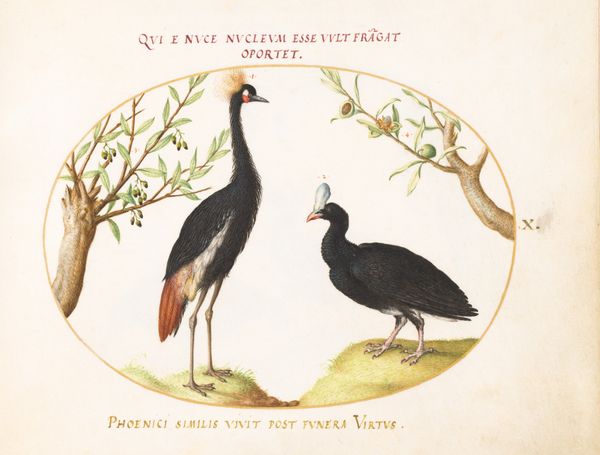
Plate 19: Two Great Egrets with Green Breeding Masks c. 1575 - 1580
0:00
0:00
drawing, coloured-pencil
#
portrait
#
drawing
#
coloured-pencil
#
animal
#
landscape
#
figuration
#
11_renaissance
#
coloured pencil
#
genre-painting
#
northern-renaissance
#
miniature
#
watercolor
Dimensions: page size (approximate): 14.3 x 18.4 cm (5 5/8 x 7 1/4 in.)
Copyright: National Gallery of Art: CC0 1.0
Joris Hoefnagel created Plate 19: Two Great Egrets with Green Breeding Masks in the late 16th century. Hoefnagel was a Flemish artist working at a time when scientific illustration was rapidly developing. In this watercolor and gouache painting, he combines his precise observations of nature with the aesthetic conventions of his time, resulting in a work that straddles the line between scientific document and artistic creation. The egrets, depicted with meticulous detail, are set within an oval frame, a common stylistic choice during the Renaissance. Hoefnagel's work reflects a growing curiosity about the natural world, fueled by exploration and trade. But it's worth considering how this curiosity intersected with colonial expansion. The desire to classify and document nature was often intertwined with the desire to control and exploit it. These birds become emblems of a world being cataloged, possessed, and changed forever. Consider how the emotional resonance of these images persists, reminding us of the complex relationship between humans and the environment.
Comments
No comments
Be the first to comment and join the conversation on the ultimate creative platform.
